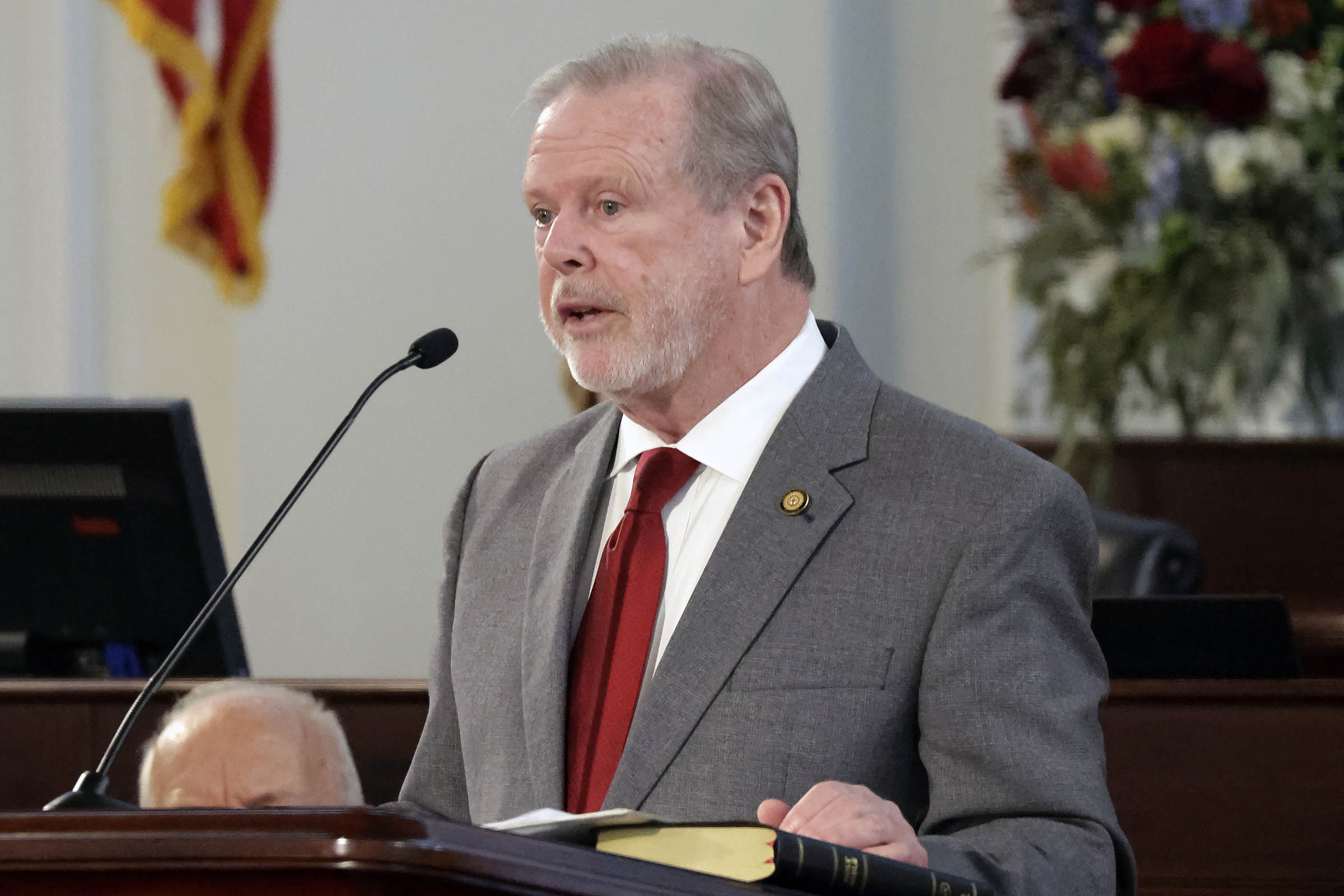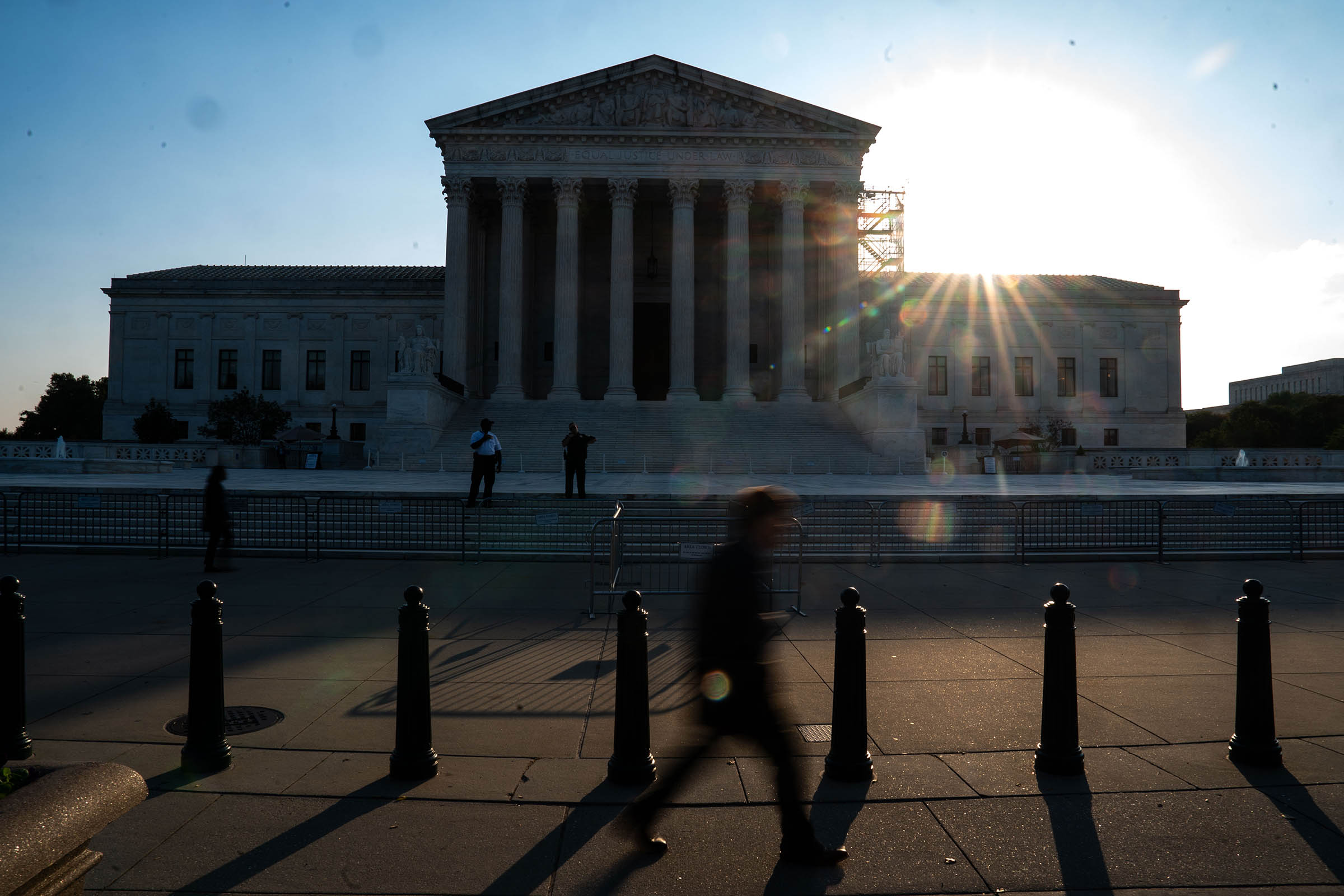By GARY D. ROBERTSON Associated Press
RALEIGH, N.C. (AP) — North Carolina’s legislature formally began redrawing the state’s congressional district map Monday, plainly stating their intent to help Republicans gain another U.S. House seat under President Donald Trump’s push to retain his party’s grip on Congress next year.
The state Senate gave initial approval along party lines to new boundaries for two eastern North Carolina districts in a move aimed at thwarting the reelection of Democratic Rep. Don Davis, one of the state’s three Black members of Congress. That followed a committee meeting in which dozens of speakers from the public sharply accused Republican lawmakers in the ninth-largest state of bowing to Trump.
The plan’s chief author was direct about the intent to help his party in the 2026 midterm elections.
“The motivation behind this redraw is simple and singular — draw a new map that will bring an additional Republican seat to the North Carolina congressional delegation,” said GOP Sen. Ralph Hise. If Democrats otherwise take back the House, Hise added, they will “torpedo President Trump’s agenda.”
The Republican legislative leaders announced plans a week ago to rework the map as a mid-decade redistricting fight escalates between Democrats and Republicans nationwide. Democrats need to gain just three more seats to seize control of the House, and the president’s party historically has lost seats in midterm elections.
Under the 2024 election map, Republicans won 10 of North Carolina’s 14 U.S. House seats in a state where statewide races are often close. That compared to a 7-7 seat split between Democrats and the GOP under the map used in 2022. Based on past statewide elections, Republicans would stand a decent chance of winning an 11th seat in 2026 should the latest proposal be implemented.
Final vote expected this week, veto can’t block map
After a Senate procedural vote Tuesday, the proposal will head to the House for expected final General Assembly approval later this week. The state Democratic Party plans an outdoor rally Tuesday to oppose it. But Democrats are the minority in both chambers, and state law prevents Democratic Gov. Josh Stein from using his veto stamp on redistricting action. Litigation challenging the map over allegations it dilutes Black voting power is likely.
“This is an attack on Black voters,” Democratic Sen. Kandie Smith, an African American legislator representing a county in Davis’ current district, said during Senate floor debate. “It’s about stealing elections by design, so that the outcomes are predetermined and accountability becomes optional.”
Counties added, removed to make district lean more to right
Under the proposal, Davis’ current 1st District — the state’s only swing seat — would shift to the right as mapmakers remove inland counties, including Davis’ home county, and replace them with several from the coast. Counties removed from the 1st District are placed in a retooled 3rd District held by Republican Rep. Greg Murphy. Election results indicate the 3rd would remain favorable for Murphy.
North Carolina Republicans, equipped with recent legal rulings that permit partisan advantage in drawing boundaries, last redrew the map in 2023, leading to three incumbent Democrats deciding against running in 2024 because lines had shifted rightward. Those changes helped Republicans retain their House majority entering 2025.
Trump is also asking other red states for more seats. He encouraged North Carolina Republican legislators last Friday on Truth Social “to work as hard as they can to pass this new Map so that we can continue our incredible Record of SUCCESS.”
Senate Democrats and their allies also blasted North Carolina GOP legislative leaders for acting on a partisan map while they are still over three months late passing a state budget.
“They are wasting precious time and taxpayer dollars bending the knee to Donald Trump and ripping away the voice of the voters. It is shameful, it is pathetic,” 19-year-old college student Eric Willoughby told the committee.
The national redistricting battle began over the summer when Trump urged Republican-led Texas to reshape its U.S. House districts. After Texas lawmakers acted, California Democrats reciprocated by passing their own plan, which still needs voter approval in November.
Former 1st District reps call proposal “a moral regression”
Voters within versions of the 1st District have elected African Americans to the seat continuously since 1992. Some counties in the current version have majority Black populations.
The proposed map is “not merely a political act — it is a moral regression,” said former 1st District Reps. Eva Clayton and G.K. Butterfield, both Black Democrats, in a news release. “It weakens the representation of Black North Carolinians and undermines the promise of equal voice and fair elections that so many have fought to secure.”
Hise said there’s nothing unlawfully discriminatory about the map. He said race-based data wasn’t used to retool boundaries and the lack of significant evidence of racially polarized voting in the region would make it unconstitutional to draw lines with a chief goal of helping Black voters elect their favored candidates.















